
Sweet and spicy, you’d be hard-pressed to find a better union of flavors. So, it’s only natural when you combine the heat of fresh jalapenos with the classic sweetness of honey; magical things will happen in your kitchen.
Honey-fermented jalapenos, or spicy honey, is one of those condiments that, once you make it, you’ll never want to run out of.
It’s wonderful drizzled over roasted winter vegetables. It sends plain cheese pizza into another stratosphere. A touch of spicy honey can turn the most pedestrian fruit salad into something spectacular. And it’s a powerful addition to a hot toddy when you’re congested from a cold. Between the whiskey and the jalapeno, you’ll be breathing from both nostrils in no time.
Quick and Easy Spicy Honey
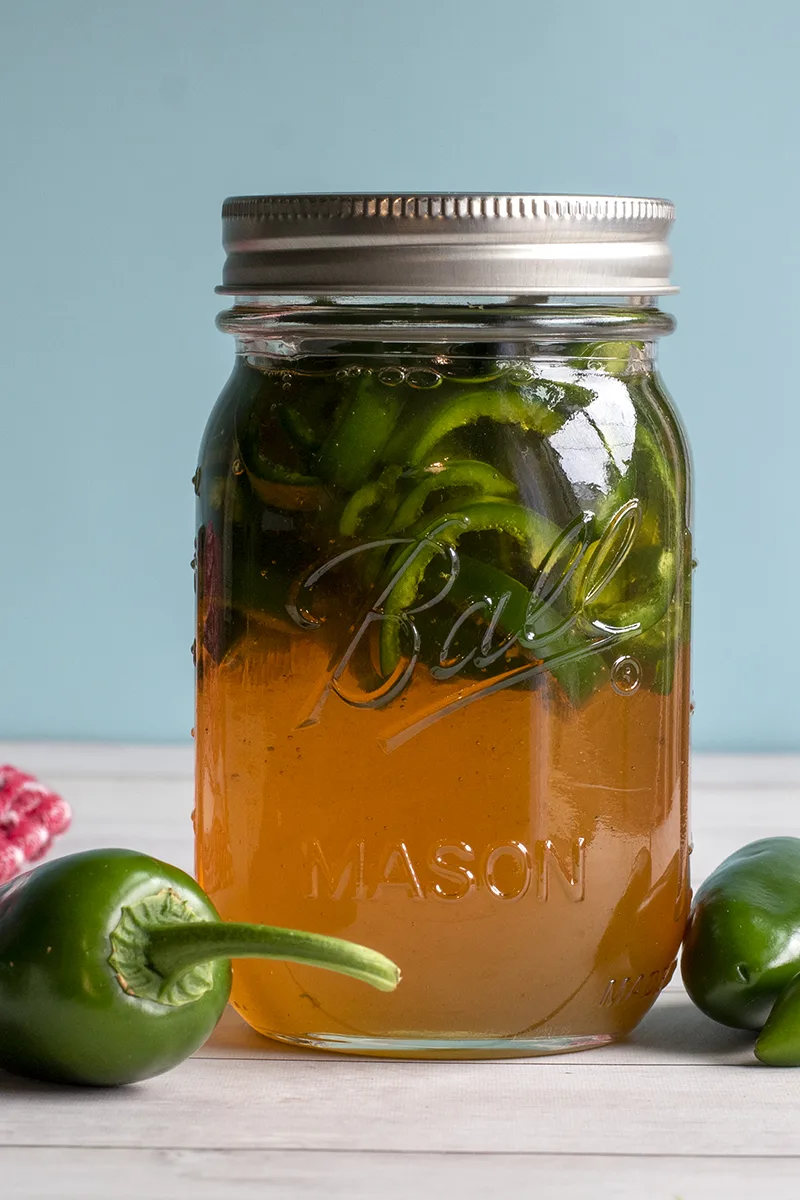
This two-ingredient wonder takes mere moments to make. You’re simply slicing fresh jalapenos, popping them in a jar and then drowning them in honey. I’ll go over the steps to make it, but to achieve sweet and spicy perfection, there are a few things to consider for the best finished product. We’ll cover those after the instructions.
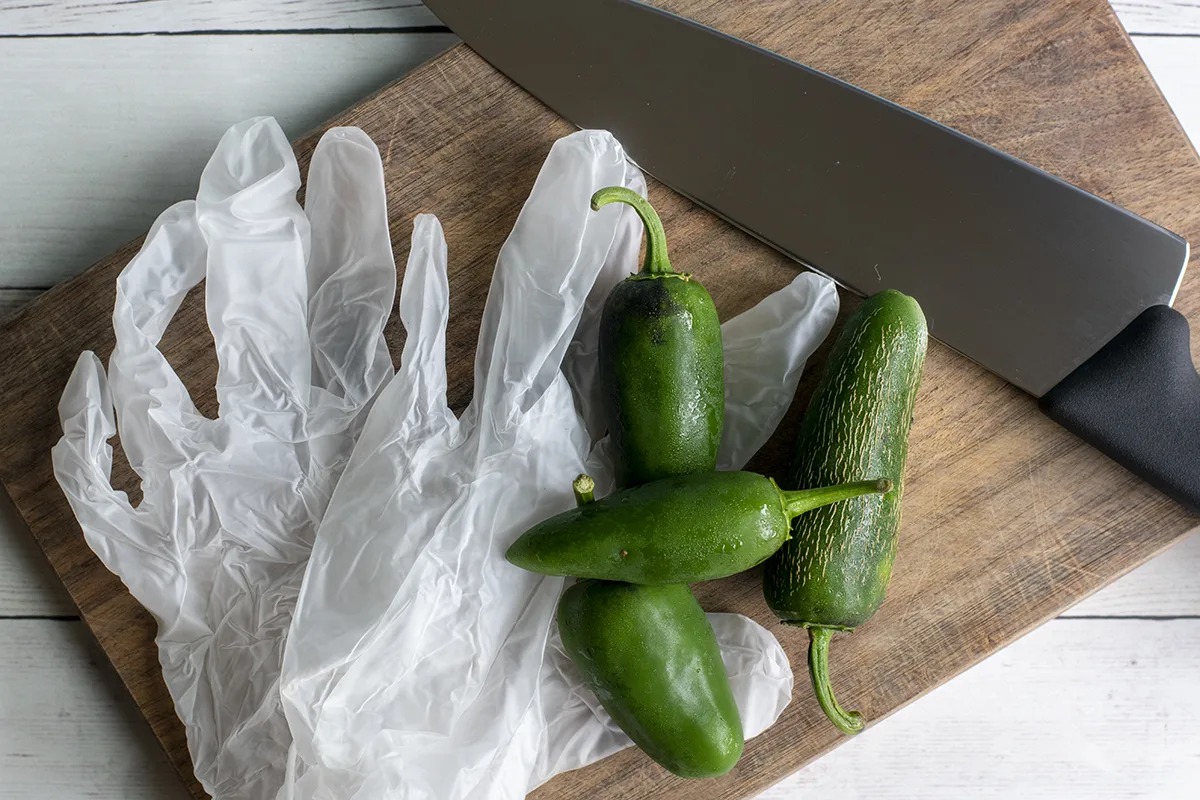
Instructions
- Using a clean pint jar, fill between 1/3 to half full of washed and sliced jalapeno peppers. 1/8” to ¼” slices are a good size to aim for. Fill the rest of the jar with honey, put the lid on it tightly and give it a good shake. Once the honey has settled again, unscrew the lid a bit so that any resulting gas from fermentation can escape.
- Over the next few days, you’ll see tiny bubbles at the top of the honey. This is good; it means your honey is fermenting.
- You can eat your hot honey any time, but ideally, you’ll want to let it ferment and extract all that spicy goodness for a couple of weeks. Store your fermented jalapeno honey in a cool dark place and enjoy it for up to a year.
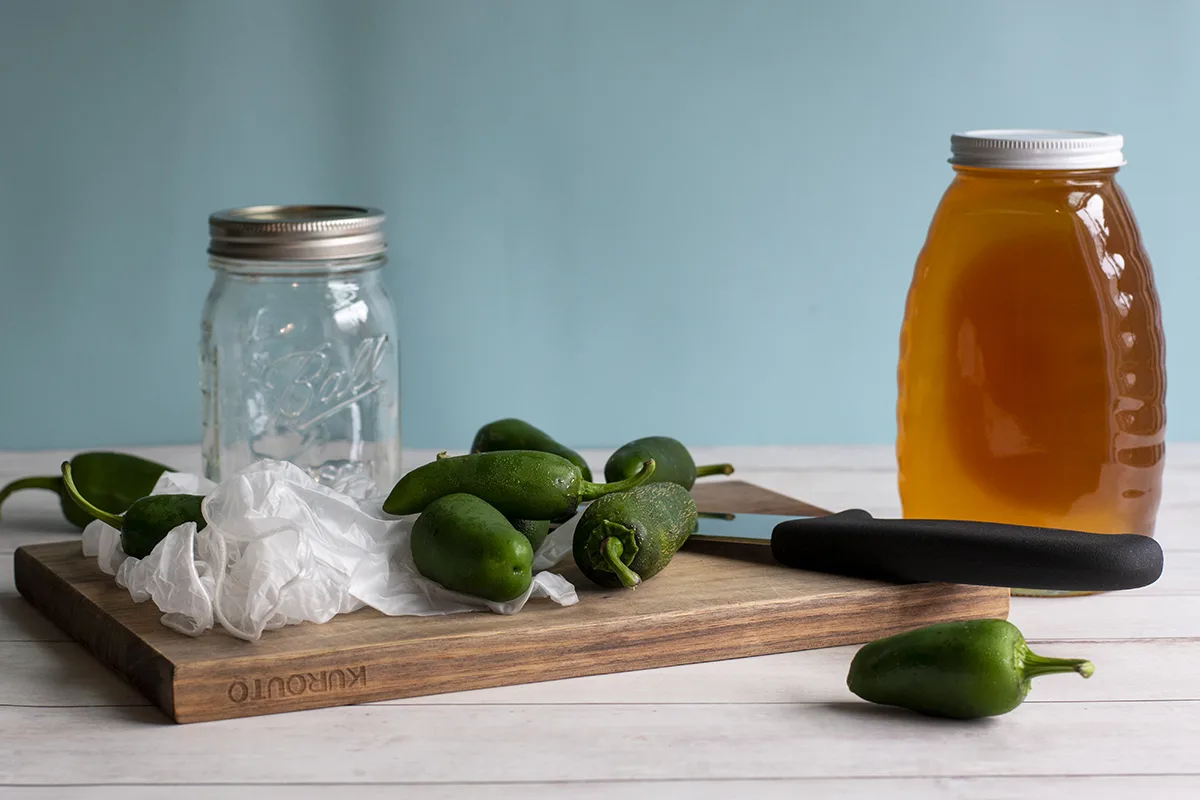
Don’t forget, not only do you get spicy honey from this, but you also get sweet, fermented jalapeno slices too. They make for killer nachos and are an excellent topping for all your favorite BBQ and southwest dishes.
Leave the slices in the honey to continue to draw flavor from each other, or if the honey reaches the perfect spiciness, scoop them out into a separate jar and store them in the fridge to be enjoyed as needed.
Now on to the important considerations I mentioned.
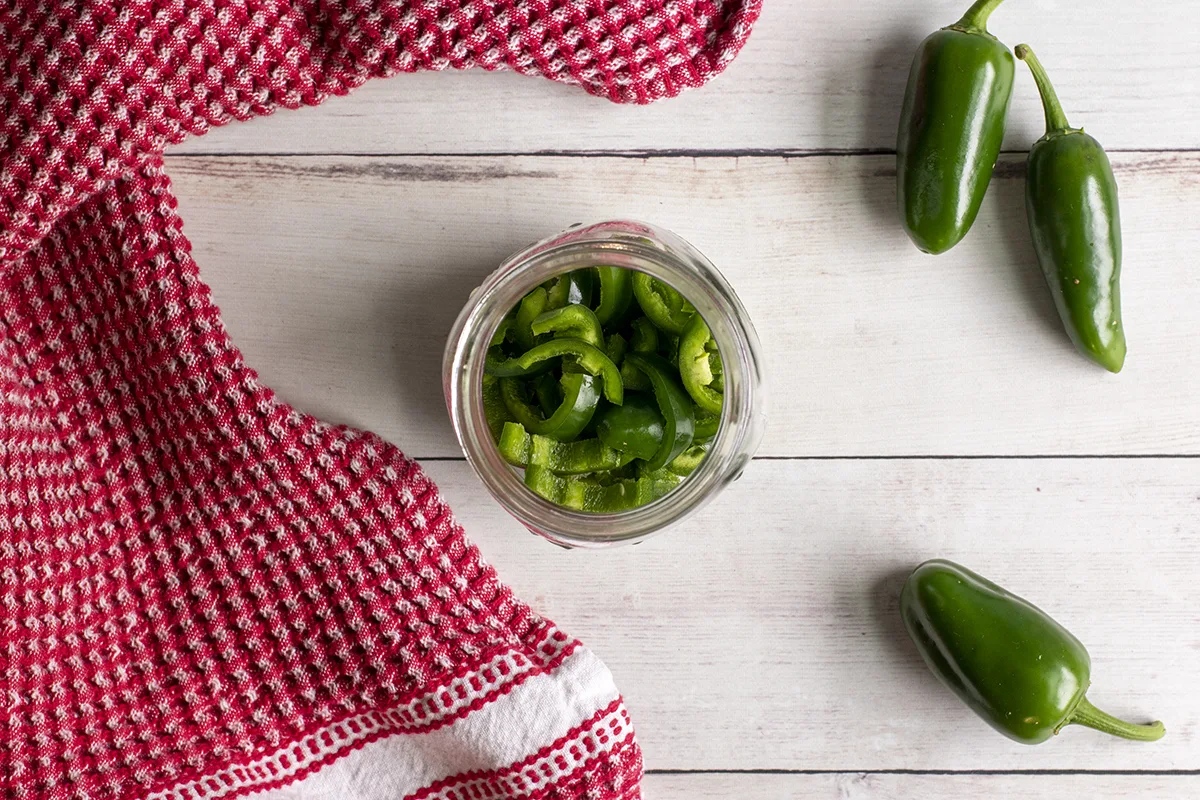
Why Raw Honey?
I know you’re probably wondering how this is different from hot pepper-infused honey. And that’s a good question. The difference is that we will use raw honey and fresh peppers to start fermentation. You end up with a living food that is shelf-stable without refrigeration.
An infused honey generally uses pasteurized honey and, quite often, dried pepper flakes. There is no fermentation, so the resulting honey will have a much shorter shelf life. And if fresh peppers are used, they will have to be removed after the infusion period and the resulting honey refrigerated to prevent mold growth.
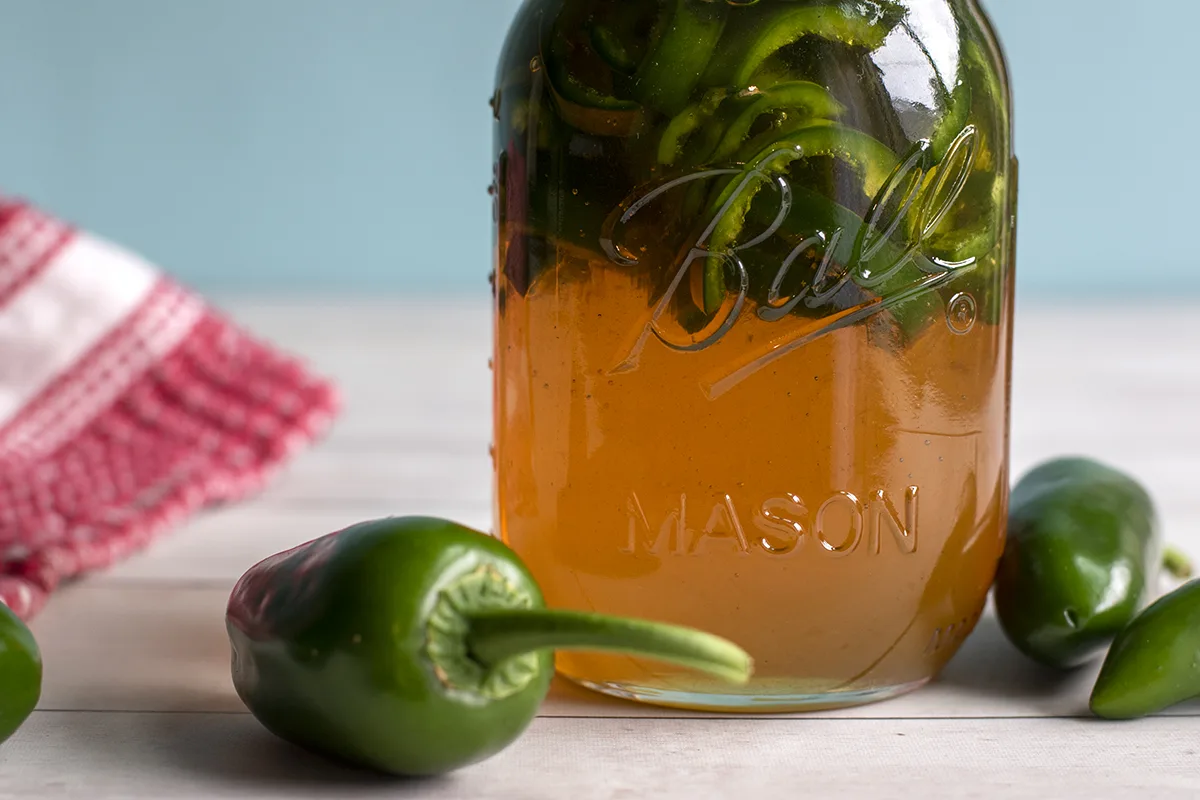
The spicy honey we’re making is a fermented food. To achieve fermentation, you need living organisms in your honey. That means we need to use raw honey, which is packed with gut-healthy microbes. Most commercially-processed honey is pasteurized to kill off the naturally occurring bacteria and yeast colonies that populate raw honey.
However, when adding fresh ingredients to raw honey, cool things start to happen. The sugar in the honey causes the cell walls of the peppers to soften and break down, releasing their water content and kick-starting fermentation. You end up with a self-preserved, living food.
How Hot Do You Like it?
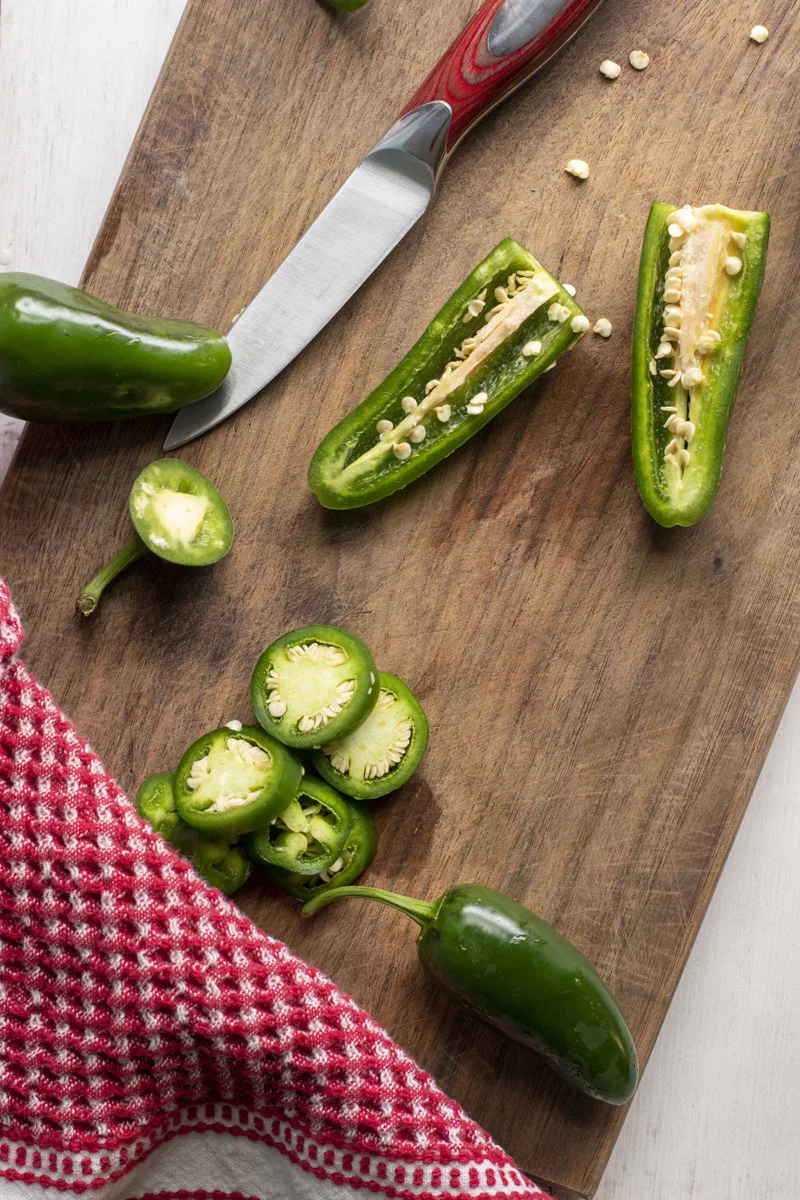
Seeds or No Seeds? You need to figure that out before adding the jalapenos to the jar. The seeds and veins in hot peppers have the highest concentration of capsaicin. If you can handle the heat, leave the seeds and veins intact, and you’ll have some seriously sweaty-brow-inducing honey on your hands.
If you want more flavor than heat, carefully remove the seeds and veins from the peppers before adding them to the jar. You’ll still have that smoky, spicy honey without the face-melting qualities of added capsaicin.
Of course, the longer the peppers sit in the jar, the hotter the honey will get too.
The easiest way to remove the seeds and veins is to cut the jalapeno in half and use a spoon to scrape them out. Be careful! If you’ve got a juicy pepper, you could squirt yourself in the eye. Scrape away from you while holding the pepper angled away from your face.
If you like the look of the pepper rings, but don’t want the added heat, slice the pepper into rings first, then use a small measuring spoon (1/2 tsp worked great for me) to gently core the pepper rings before tossing them into the jar.
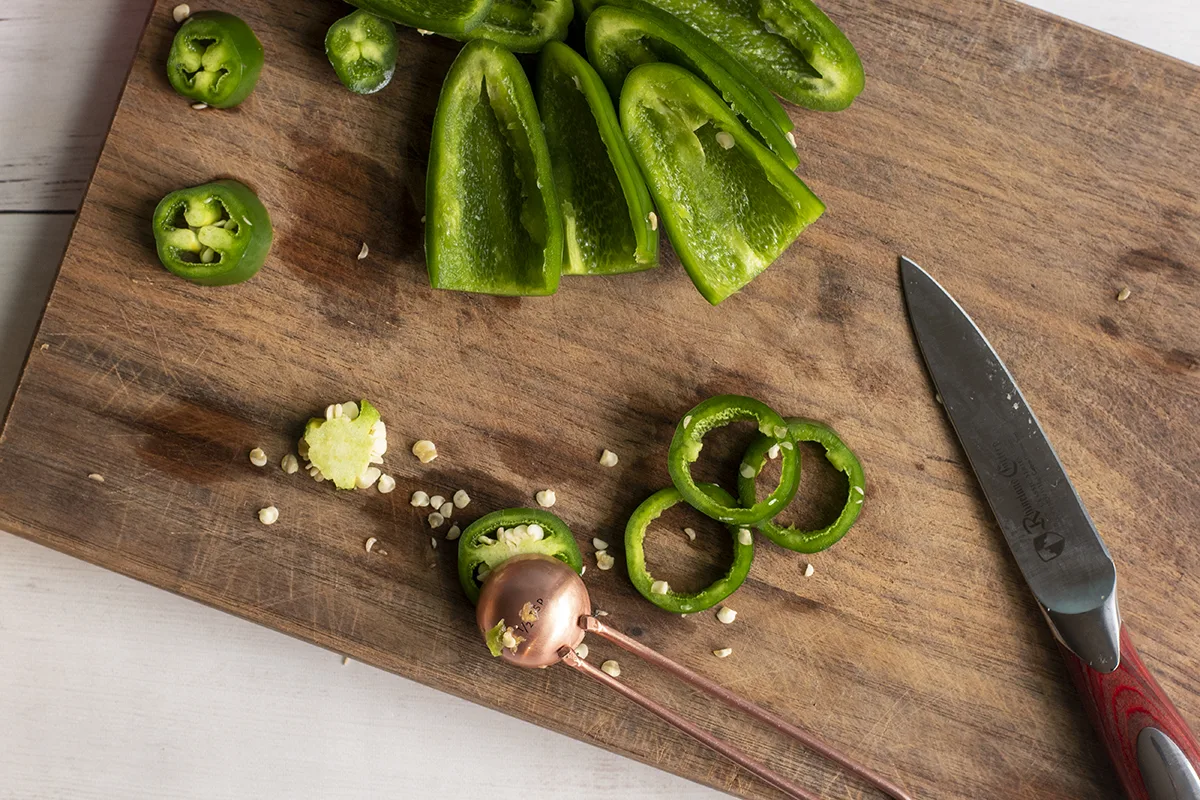
Wear Gloves When Handling Hot Peppers
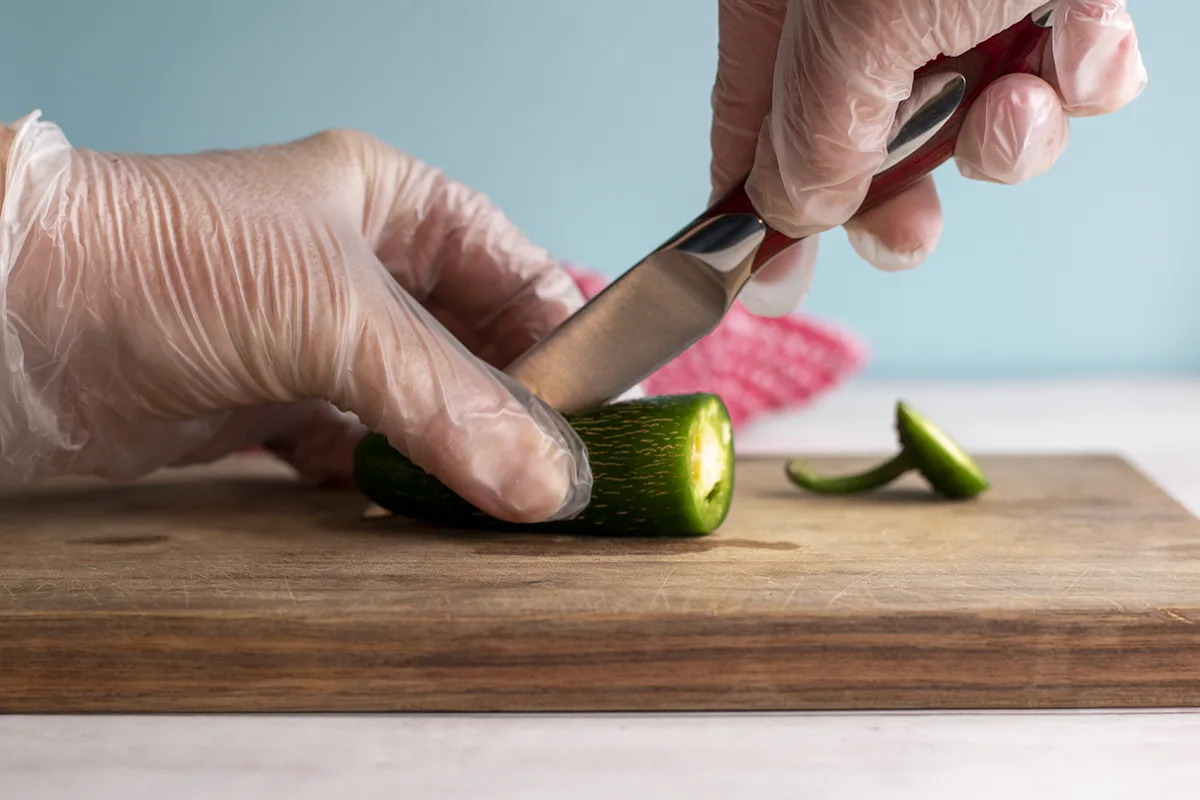
Capsaicin is no joke. Even in low-Scoville unit peppers, such as jalapenos, you can end up burning your fingers if you work with a lot of them. Always wear gloves when preparing hot peppers, and don’t touch your face or skin. Depending on the number of peppers and how hot they are, eye protection is not a bad idea either.
Corking
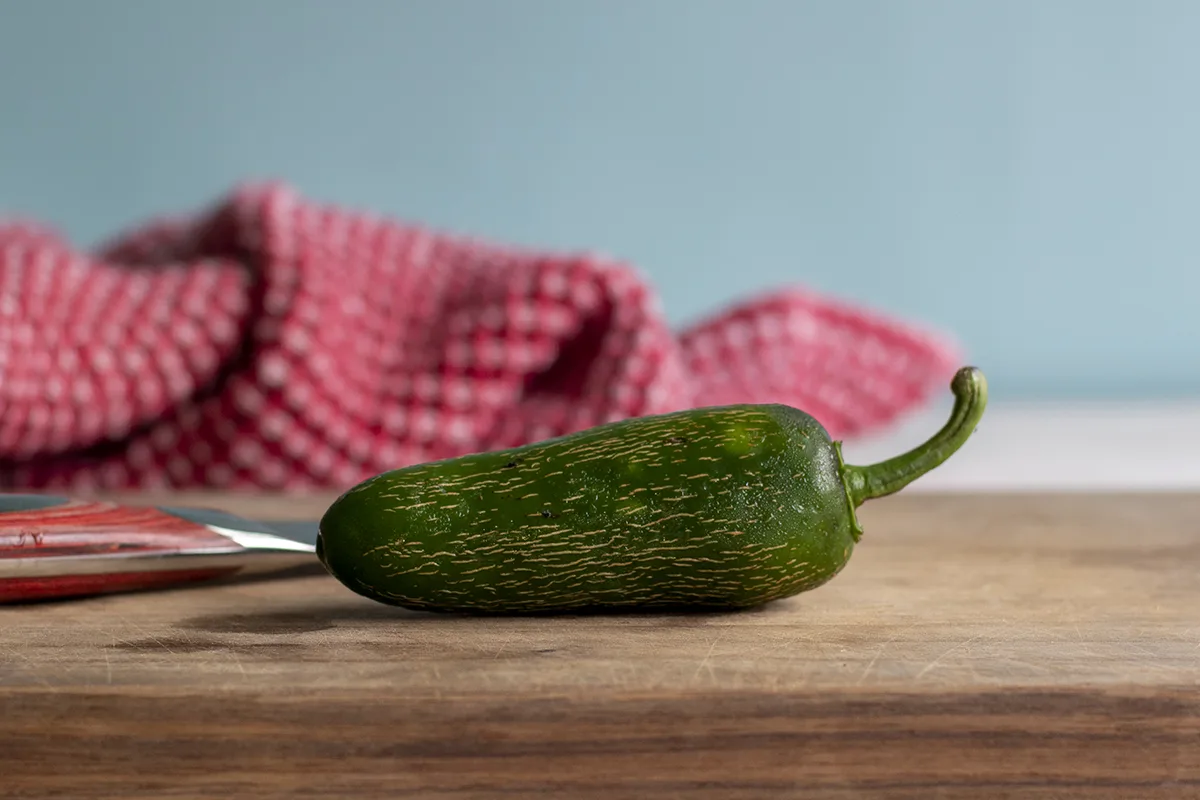
Let’s talk about pepper corking for a moment. Have you ever grabbed a jalapeno out of the garden and noticed it’s covered in brown, woody lines? This is called corking, which happens when a pepper’s inside grows faster than the outside. Yup, even peppers get stretch marks.
Peppers with this corking are still perfectly edible and may taste better than without.
There is a popular myth (well-debated among hot pepper lovers) that peppers with corking are hotter and sweeter than their non-striped counterparts. Apparently, the pepper’s flavor has more to do with age and size rather than whether or not it has corking. As corking usually only happens on larger peppers, it stands to reason that it will have better flavor but not necessarily be hotter.
Grab yourself a corked jalapeno or two and join the debate.
Honey and the Big, Scary “B” Word
Many folks new to raw honey and fermentation are often scared away from trying honey ferments due to botulism fears. On its face, botulinum toxins are pretty scary; they’re some of the most powerful neurotoxins known to man. You know, which is why we decided to medicalize it and inject them into our faces.
Humans are weird.
However, a closer look beyond the comment section of your average Facebook post reveals just how rare it is and how safe honey ferments are.
Clostridium botulinum is a naturally occurring bacteria spore that hangs out in the soil, dust, creeks, rivers, and oceans. It’s basically everywhere. On their own, the spores are quite harmless. It’s only under very specific conditions that the bacteria can develop to produce the toxin.
The ‘biggest’ botulism concern with honey is infant botulism.
And I put biggest in air quotes because it’s as easy to prevent as not giving infants honey. Infant botulism occurs when a baby ingests some of the spores (naturally occurring in honey and other foods), and they grow in the large intestine. Infants have immature immune systems, so the botulism spores can colonize in the intestine causing severe illness and possibly death.
As we grow, our immune system continues to develop, and our digestive system becomes more acidic, so the spores cannot grow in our digestive tract and are simply passed as waste.
This is why it’s so important never to give honey to infants. It’s that simple. Just don’t do it.
Food-born botulism is even rarer with honey as honey is generally too acidic for botulinum spores to grow.
Okay, but what exactly is ‘rare’? If you’re like me, you want to see numbers.
As unsettling as the thought of botulism is, the occurrence of food-born botulism and infant botulism cases overall (not just where honey is concerned) is incredibly rare.
Whenever I teach someone how to make a honey ferment, and the subject of botulism comes up, I always point them directly to the CDC. I’m not an expert, but they are, and they share their information readily. Doctors must report botulism cases to the CDC, and you can easily see the annual botulism surveillance numbers on the CDC website.
In the states, those numbers (which lump together all three types of botulism: infant, wound and food-born) are usually around 200 cases or fewer every year. Out of 330 million people, you begin to see just how truly rare botulism is. So go ahead and enjoy your spicy jalapeno honey, fermented garlic honey and fermented ginger honey. Just don’t give any to infants.

Get the famous Rural Sprout newsletter delivered to your inbox.
Including Sunday musings from our editor, Tracey, as well as “What’s Up Wednesday” our roundup of what’s in season and new article updates and alerts.

